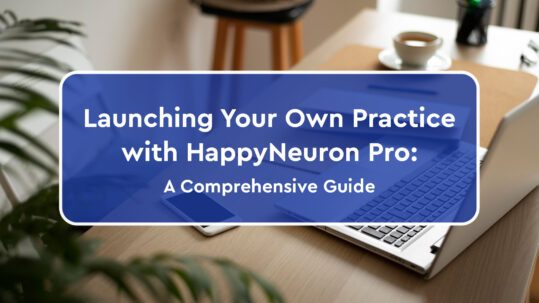5 Things You Need to Provide Remote Cognitive Rehabilitation Therapy
Providing remote cognitive rehabilitation therapy may seem difficult, but can be made easy with the right materials. In this blog post, we share with you 5 things that you need to help you provide cognitive rehabilitation therapy for your clients from home.
1. A HIPAA Compliant Video Conferencing Platform
When meeting with clients online, it is important to maintain the face-to-face interaction you would normally have with your clients in the office. With video conferencing, you are able to meet with your clients wherever either of you are. However, many countries require that the video conferencing platform being used is HIPAA compliant to maintain confidentiality. There is a whole list of tools available, but we picked for you the best ones that you can try with your clients today.
2. A Digital Cognitive Therapy Tool
Part of cognitive rehabilitation therapy involves the practice of cognitive skills. This is done using both print and digital materials. Digital materials allow clients to have access to a whole range of cognitive therapy exercises. Some digital cognitive therapy tools allow the clinician to assign their clients “homework” and be able to receive instant results after their client has performed assigned exercises. Have you tried a digital cognitive therapy tool yet? You can try one here for free.
3. Good Worksheets
Using both digital cognitive therapy tools and print materials allows clients to practice cognitive skills using different mediums. “Good worksheets “ are print materials that offer a substantial challenge to your client but are also fun so that your client remains engaged. The content of “good worksheets” should provide challenges that connect to real-life as much as possible. You can read more about the 5 characteristics of good worksheets and even download some here. Sometimes, some companies release free mini worksheets on social media for creative minded therapists.
4. Reliable Clinician Written Guides on Cognitive Rehabilitation Therapy
Many therapists, especially young graduates are new to providing cognitive rehabilitation therapy. Fortunately, expert clinicians in the field have published extensive scientific literature and guide books on what the best practices are for providing this specific kind of therapy. The great news is that the techniques shared in these guides apply to a variety of patient populations that experience similar cognitive complications. Two guides we highly recommend for the new and even seasoned clinician are “Cognitive Remediation to Improve Functional Outcomes” and “Cognitive Remediation for Psychological Disorders – Therapist Guide, 2nd Edition”. You can purchase both of these guides on Amazon.
5. Confidence in Yourself
Confidence is something that money cannot buy. You can have everything on this list, but if you do not believe in yourself and your expertise neither will your clients. Take time to lean into your treatment philosophy and remember why you became a clinician in the first place. Know that you can do this, and that you aren’t alone. There are plenty of free resources available to help you learn to start your telehealth cognitive rehabilitation therapy program. What is going to make your program special is you and your personal touch on how you do therapy.
Providing cognitive rehabilitation therapy remotely may seem like a daunting task. Fear not, this list of 5 things needed to provide cognitive rehabilitation therapy remotely will help set you up for telehealth success. By providing remote cognitive rehabilitation therapy, you’ll be able to work with clients using video-conferencing, use engaging digital cognitive therapy tools to practice cognitive skills, provide your clients with ample challenge using good worksheets, have the knowledge of experts in the field, and apply your personal touch to cognitive rehabilitation to a wider range of people needing your services.









